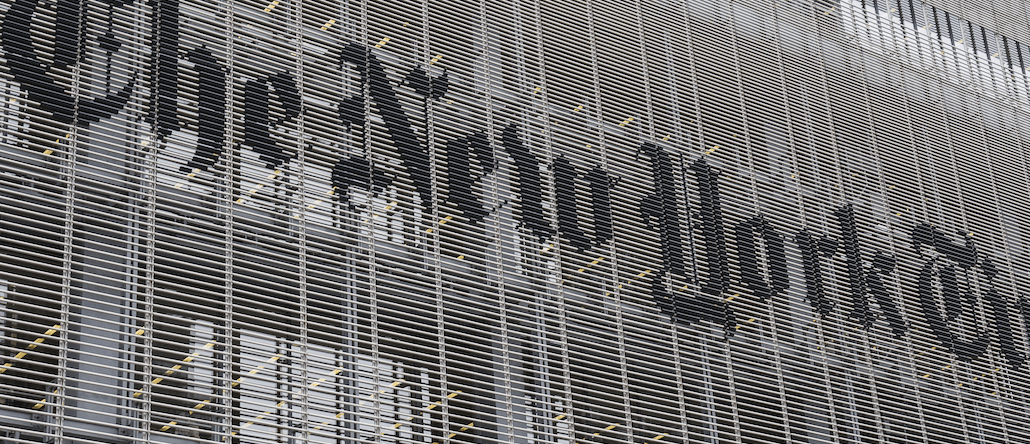
For the second time this year, The New York Times is acquiring a marketing agency. This time, it’s buying Fake Love, an agency that specializes in live experiences, virtual and augmented reality.
The Times is trying to grow its revenue in part by offering more ad agency services, as it did by adding influencer marketing agency HelloSociety in March and now, Fake Love. Buying an existing agency was a faster way to build up those offerings than developing them from the ground up. The Times’ native ad unit, T Brand Studio, has worked with Fake Love before, so the publisher was already familiar with it. For one of the projects, the Times used Fake Love to create a VR video ad to promote the Weinstein Company movie “Carol: Dearest…”
“We’re really interested in playing a bigger role in the marketing services value chain — coming up with an idea, creating it, distributing the idea, measuring it,” said Sebastian Tomich, senior vp of advertising and innovation at the Times.
Financial terms of the deal, set to be announced today, were not disclosed. According to its LinkedIn profile, Fake Love has fewer than 50 employees.
Native advertising can be lucrative, but it’s hard to do well and with predictability, which has led publishers to look for other services to sell marketers. Tomich said Fake Love will help the Times meet new kinds of requests it’s fielding from advertisers itself rather than farming them out to external agencies.
“Thanks to Pokemon Go, I’m getting daily requests for [augmented reality],” he said. “I’m getting lot of requests for chatbots. And VR, the market is already hot. We’ve had a client once a week getting pretty serious about doing a project with us. We want to be able to bring that in house.”
Another part of the reason for buying an agency is so the Times can serve advertisers who are in the market for creative work but don’t necessarily want to buy media from the Times. That’s why, like HelloSociety, Brooklyn-based Fake Love will keep its own branding and maintain its operation separate from the rest of the Times.
Ad position: web_incontent_pos1
“A big hurdle you have to overcome is, it takes a meeting or two to show we’re not pitching the New York Times audience, we’re pitching the creative,” Tomich said. “It’s really important that we have two different lines of business development so the lines remain distinct. If we’re affiliated with a publishing brand, you have to overcome that that we’re not there to pitch media.”
More in Media

NewFronts Briefing: Samsung, Condé Nast, Roku focus presentations on new ad formats and category-specific inventory
Day two of IAB’s NewFronts featured presentations from Samsung, Condé Nast and Roku, highlighting new partnerships, ad formats and inventory, as well as new AI capabilities.

The Athletic to raise ad prices as it paces to hit 3 million newsletter subscribers
The New York Times’ sports site The Athletic is about to hit 3 million total newsletter subscribers. It plans to raise ad prices as as a result of this nearly 20% year over year increase.

NewFronts Briefing: Google, Vizio and news publishers pitch marketers with new ad offerings and range of content categories
Day one of the 2024 IAB NewFronts featured presentations from Google and Vizio, as well as a spotlight on news publishers.
Ad position: web_bfu